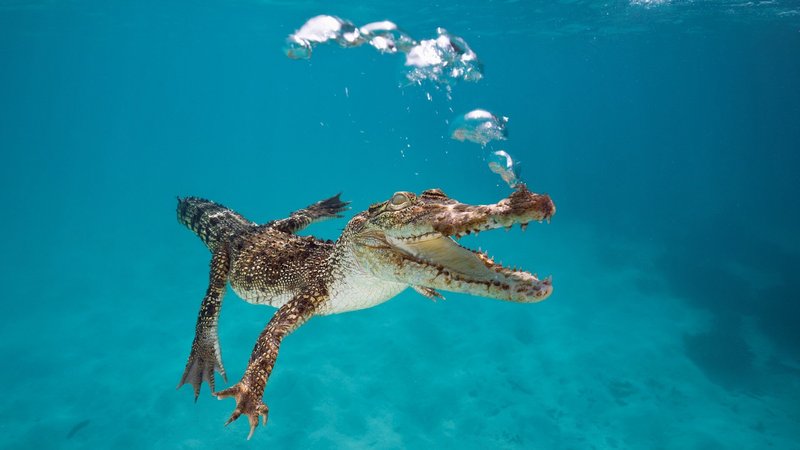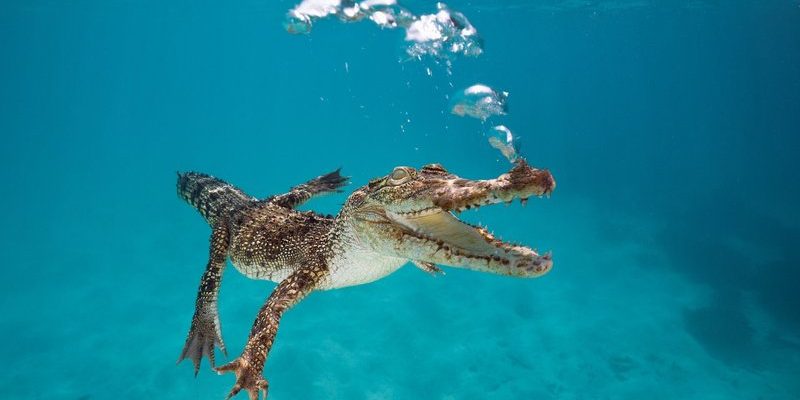
In the grand scheme of nature, every player has a part to enact, and the saltwater crocodile is no exception. These reptiles don’t just live in their habitats; they help shape them, impacting everything from the water quality to the populations of various animals. You might be wondering how exactly a reptile that can grow up to 23 feet long plays such a vital role. So let’s dive into the waters of understanding the saltwater crocodile’s ecosystem, unraveling its importance one fascinating detail at a time.
Understanding the Ecosystem
To appreciate the role of the saltwater crocodile, it’s essential first to understand the term ecosystem. An ecosystem is a community of living organisms—like plants, animals, and microorganisms—interacting with their physical environment, including air, water, and soil. Picture a bustling city where everyone has a job, from the street cleaners to the bus drivers. In this case, the saltwater crocodile acts as the city planner, making sure everything runs smoothly.
Within saltwater and brackish environments—like estuaries and mangrove swamps—these crocodiles are often at the top of the food chain. They help control populations of fish, birds, and even other reptiles. This balance prevents overpopulation of certain species, which can lead to problems down the line. Just like in any thriving community, it’s crucial for species to maintain their population at sustainable levels.
Predator and Prey Dynamics
The saltwater crocodile serves as a keystone predator, meaning its presence significantly affects the structure of the community around it. By keeping populations of herbivorous animals—like turtles and fish—in check, they ensure that the vegetation in their habitat doesn’t get overgrazed. If these plants were to die off, it could lead to erosion of riverbanks and a decline in water quality.
It’s almost like when a football team has a star player. That player’s performance can affect the whole game. Here, the saltwater crocodile’s hunting strategies and diet dictate which other species thrive or struggle. They primarily feed on fish, birds, and mammals, contributing to the health and viability of those populations. This allows other species to flourish, creating a diverse and balanced ecosystem.
The Cleanup Crew
Another fascinating role of saltwater crocodiles is that of the cleanup crew. When they eat, they often leave behind parts of their prey that can attract other scavengers. These leftovers provide food for smaller animals like vultures, crabs, and even other fish. In a way, the crocodile ensures that no part of the food chain goes to waste.
So, you might think of these crocodiles as nature’s recyclers. By consuming large amounts of prey, they help maintain the health of the ecosystem. This aspect of their behavior is particularly important because it promotes nutrient cycling, helping various organisms thrive. Think about that messy fridge—you know, the one that can quickly get overwhelmed if you don’t clean out old food regularly? The saltwater crocodile helps keep the “fridge” of its environment functioning properly.
Impact on Habitat and Water Quality
Saltwater crocodiles also play a key role in shaping their habitats, particularly in estuaries and coastal environments. Their nesting behavior influences the layout of the landscape. When they dig nests, they create burrows that not only provide homes for themselves but also for other small animals and plants. This creates an interconnected web of life wherein each creature has its role.
Moreover, these crocodiles impact water quality in their habitats. Their presence can influence the amount of vegetation along riverbanks, which helps filter pollutants and keep the water clean. Imagine a natural water treatment facility where the crocodile is the chief operator, ensuring that everything runs smoothly. Healthy water supports not just crocodiles, but countless other species that depend on it for survival.
Conservation Challenges
Despite their importance, saltwater crocodiles face numerous challenges in the wild. Habitat destruction due to human activities, like logging and coastal development, endangers these creatures. When their habitats are altered or destroyed, it disrupts the balance of the entire ecosystem. You can think of it like removing a critical section of that busy city—it throws everything off balance and leads to chaos.
Additionally, poaching and hunting for their skin have contributed to declining populations in some areas. Conservation efforts are crucial to protect these magnificent creatures and ensure they can continue playing their integral roles in the ecosystem. By raising awareness and supporting sustainable practices, we can contribute to their survival and, in turn, the health of the ecosystems they inhabit.
The saltwater crocodile is more than just a fearsome predator; it’s a vital part of its ecosystem. From controlling prey populations to maintaining water quality and shaping habitats, these creatures have a profound impact on their surroundings. Honestly, without them, our coastal and estuarine systems would look a lot different—and not in a good way.
So, the next time you hear about the saltwater crocodile, remember that it’s not just about their impressive size and strength. It’s about how they fit into the intricate web of life that encompasses their environment. By valuing and protecting these amazing reptiles, we contribute to the health and balance of our planet. Let’s celebrate the saltwater crocodile and all it does for the ecosystems it calls home!

